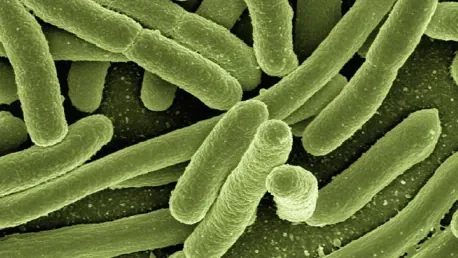In a significant leap for diagnostic science, researchers from Tohoku University have unveiled a new approach leveraging composite polymer particles adorned with gold nanoparticles (GNDPs) to enhance the accuracy and sensitivity of tests for infectious diseases such as the influenza virus and SARS-CoV-2. This innovative methodology could transform the landscape of medical diagnostics by addressing the limitations of traditional testing techniques.
The Role of Antigen-Antibody Reactions in Diagnostics
Traditional diagnostic tests often rely on antigen-antibody reactions, a well-established method where antibodies attached to probes detect the presence of viruses. These probes can be fluorescent, absorptive, or colored particles that facilitate visual identification of the virus. Among these, gold nanoparticles (Au-NPs) have stood out due to their unique plasmon absorption properties and remarkable chemical stability, making them a popular choice for immunoassays. However, conventional methods typically require large quantities of nanoparticles to amplify their optical density sufficiently to produce a detectable signal.
The Innovation of Self-Organized Precipitation (SORP)
To address this challenge, Tohoku University researchers have developed a groundbreaking technique known as self-organized precipitation (SORP). This method involves dissolving polymers in organic solvents and then introducing a non-dissolving liquid, such as water. As the original solvent evaporates, the polymers assemble into tiny particles. When these polymer particles are decorated with GNDPs, they exhibit enhanced sensitivity and higher optical density compared to traditional gold nanoparticle-based tests. This innovation significantly reduces the amount of nanoparticles needed for effective detection, presenting a more resource-efficient solution for diagnostic testing.
Implications and Applications of GNDP-Based Testing
The overarching trend in this research points towards the continuous improvement of diagnostic tools to offer better accuracy and sensitivity with fewer resources. The study from Tohoku University underscores that GNDP particles are versatile and broadly applicable, extending their utility from laboratory settings to real-world diagnostic applications. These advancements have the potential to improve the detection of antigen-antibody reactions significantly, marking GNDPs as a promising development for future diagnostic tests.
Furthermore, this research highlights the potential for integrating advanced materials science into medical diagnostics, paving the way for more efficient and sensitive disease detection. The findings indicate substantial improvements in detecting antigen-antibody reactions, suggesting that GNDPs could be a key component in the next generation of diagnostic tests.
Advancing the Future of Medical Diagnostics
In a groundbreaking development for diagnostic science, researchers from Tohoku University have introduced a novel technique that utilizes composite polymer particles decorated with gold nanoparticles (GNDPs) to significantly improve the accuracy and sensitivity of tests for infectious diseases like the influenza virus and SARS-CoV-2. Traditional testing methods have long had limitations in terms of sensitivity and accuracy, which this new approach aims to overcome. The use of GNDPs enhances the detection capabilities for these viruses, allowing for earlier and more reliable diagnoses. This can be particularly crucial in controlling the spread of infectious diseases, as quicker and more precise testing can result in timely treatment and isolation measures, reducing transmission rates. Additionally, the methodology could potentially be adapted for other infectious agents, broadening its impact on public health. By effectively addressing the shortcomings of existing diagnostic techniques, this innovative approach has the potential to revolutionize medical diagnostics, making it a significant leap forward in the ongoing battle against infectious diseases.









